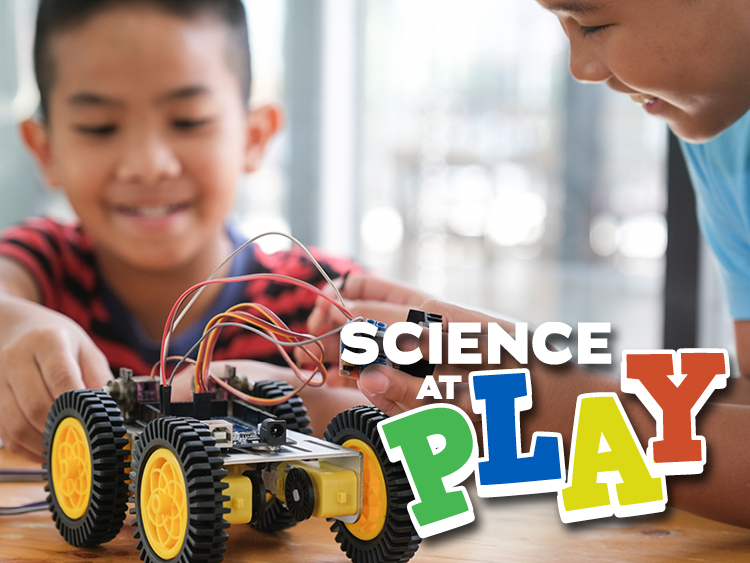You stand staring at a complex contraption of your own design. Hands shaking with excitement, you question if all your hard work calculating, designing, testing, building, and redesigning will pay off. You take a deep breath to calm yourself, and slowly move your hand to set off the first reaction in your highly complicated Rube Goldberg machine. The ping pong ball begins rolling down the intricate ramp setup and curves up the bank of your first right-hand turn. It travels for a bit longer down a slope as it collects speed, destined to meet its stop, dominos. With all of the exhilarating emotions you’re feeling you think, “Will it have enough speed to gently knock down the first domino into the next? Is it going too fast? Will it collide, slamming into all of the dominos at once?”
Rube Goldberg:
Rube Goldberg was a cartoonist and engineer. He was well known for drawing cartoons with a complex contraption designed to complete a simple task.
A Rube Goldberg machine uses a set of reactions that work in succession, triggering one event after another until the final event is triggered. Often, each reaction is a simple task that will trigger the next, for example, a row of dominos, a well calculated swinging object, or a ball rolling down a ramp. The most important thing is that each step’s event needs to trigger the following event, and so forth.
Many things, such as precision, patience, and perseverance will play a role. Imagination, time, and materials are your only constraints. Failure is to be expected and celebrated throughout the engineering process of your machine. With each failure, you will learn something new that you can apply to make your machine even GREATER! Also, it just makes things far more fun. I love to think back about the times I built even the silliest of things with my family. Things would inevitably go wrong and we would laugh and act goofy. However, it was what came next that I have held onto so dearly, even in adulthood, and that is learning from and overcoming those failures. I can remember, even if my parents would sometimes chalk it up to stubbornness, sitting for hours trying different things until I found a solution to the problem.
All that is left is to try. Try new things and setups that you might not think possible. Look closely as you try each part of your grand machine. With each pass, check to see if there are any improvements or different ways you can trigger the next event. When you get frustrated, ask for help. You’ll be surprised by how others will look at the problem and create a solution you may have never thought about on your own. Embrace the challenge and enjoy the glory as your machine comes together.
The Science:
There are many concepts at play to make a successful Rube Goldberg Machine; potential energy, kinetic energy, mechanical advantage, work, forces, acceleration, momentum, and more – all have an important role. Although the main physics principle driving the action is the conservation of energy. It allows the builder to create a machine with stacks of stored potential energy waiting to be converted into other forms. Often the stored potential energy is in the form of gravitational potential energy, energy an object has due to the position from the ground. Think about when you sit on top of a slide, your gravitational potential energy is relative to your position at the top of the slide and the ground. When you slide down the slide, your potential energy (stored energy) is converted into kinetic energy ( energy of motion), and you pick up speed. This kinetic energy is what you can use to do work on your next event/contraption, that then triggers the next, and so on, until you get to your final event. Potential energy can be stored in elastic materials, springs, and chemical bonds, for example. This potential energy can also be converted into kinetic energy.
Check out some of these videos for ideas and see if you can identify some of the energy transformations.
And now it’s time!
You have your simple machines and reaction events all set up and waiting. You can take that deep breath and get ready to enjoy what comes next. You know that it is going to be AMAZING!
We want to see what you try at home. Share your creation with us on social media by using the #ScienceAtPlay and tagging @CTScienceCenter.

Sarah Andrew is the Connecticut Science Center’s Camp Director and a STEM Educator. She oversees camp programs for students in first grade through middle school, and delivers Discovery Center labs and traveling programs to students throughout Connecticut. Sarah taught in public schools in Florida and Massachusetts for ten years. In her role at the Science Center, she is excited to make a bigger impact and “explore that raw energy and excitement that students feel when they experience something for the first time.” Her memories of childhood outdoor adventures with her parents, her time as a Girl Scout, and amazing teachers add to her enthusiasm. She now hopes to inspire and encourage the next generation of students through her work at the Science Center.



